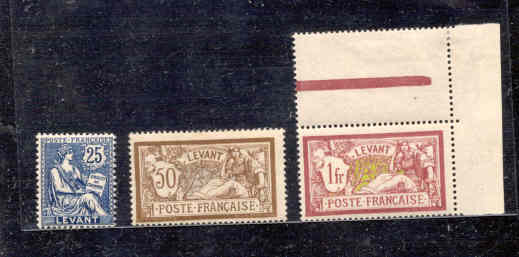
(reduced sizes)
Capital Addis Abeba
Note: on my website many of the
pictures can not be seen! They are of course present in the cd's;
contact me if you want to purchase them: evert@klaseboer.com.

(reduced sizes)
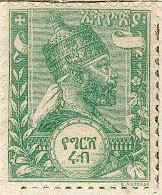
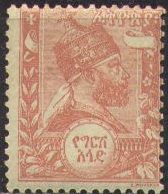
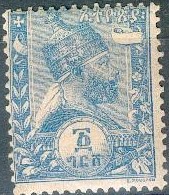
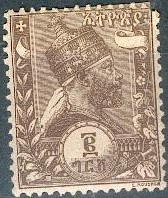
1/4 g green 1/2 g red 1 g blue 2 g brown
The stamps dealer Arthur Maury offered these stamps at a discount in France (roughly half of the quantity of stamps printed was offered in this way). To distinguish stamps for real use in Ethiopia and stamps issued for stamp collectors they were overprinted with 'Ethiopie' (2 types) or native text (3 types):
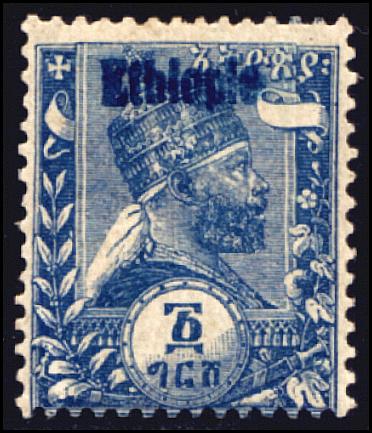
'Ethiopie' overprint on 1 g blue
Surcharged with or without overprint in native text (1904)
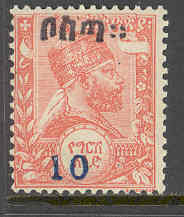
05 on 1/4 g green 10 on 1/2 g red 20 on 1 g blue 40 on 2 g brown Surcharged and overprinted with native text and stars(1907)
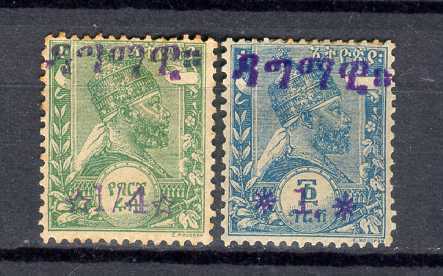
1/4 on 1/4 g green 1/2 on 1/2 g red 1 on 1 g blue 2 g on 2 g brown 1908 Surcharged '1 PIASTRE' and fancy pattern
'1 PIASTRE' on 1/2 g red (also exists without black overprint on top) 1908 Surcharged
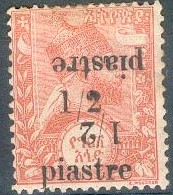
(Double inverted overprint? Might not be genuine!)
1/4 Pi on 1/4 g green 1/2 Pi on 1/2 g red 1 Pi on 1 g blue 2 Pi on 2 g brown 1911 Overprinted 'AFF. EXCEP FAUTE TIMB', value with pen (Dire Daoua Provisional)
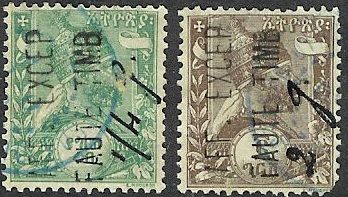
1/4 g on 1/4 g green 1/2 g on 1/2 g green 1 g on 1 g blue 2 g on 2 g brown
Forgeries: Four different kinds of forgeries are known. The
forgeries of the forger Fournier are the most dangerous. Many
different overprints have been apllied to these forgeries and
images can be found in 'The Fournier Album of Philatelic
Forgeries'. The genuine stamps should be perforated 14 x 13 1/2,
however, the Fournier forgeries are perforated 14 x 14.
Furthermore, there is an error in the design, the white line, in
front of the face of the king, is interrupted by a flower at the
bottom (as in the genuine), this white line continues below the
flower in the genuine stamp, but it disappears in the forgeries
(source http://www.doig.net/Fournier.html).
Also, the 2 white lines to the right of the upper left hand cross
do not go all the way to the top (as in the genuine stamps), but
stop earlier.
The other three forgeries have weird cancels; one with
'IMITATION' in a circle, made by Kamigata
of Japan, the other two a square of lines (there are two types?).
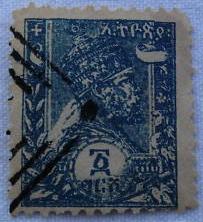
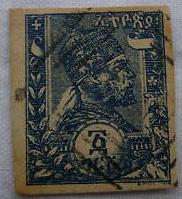
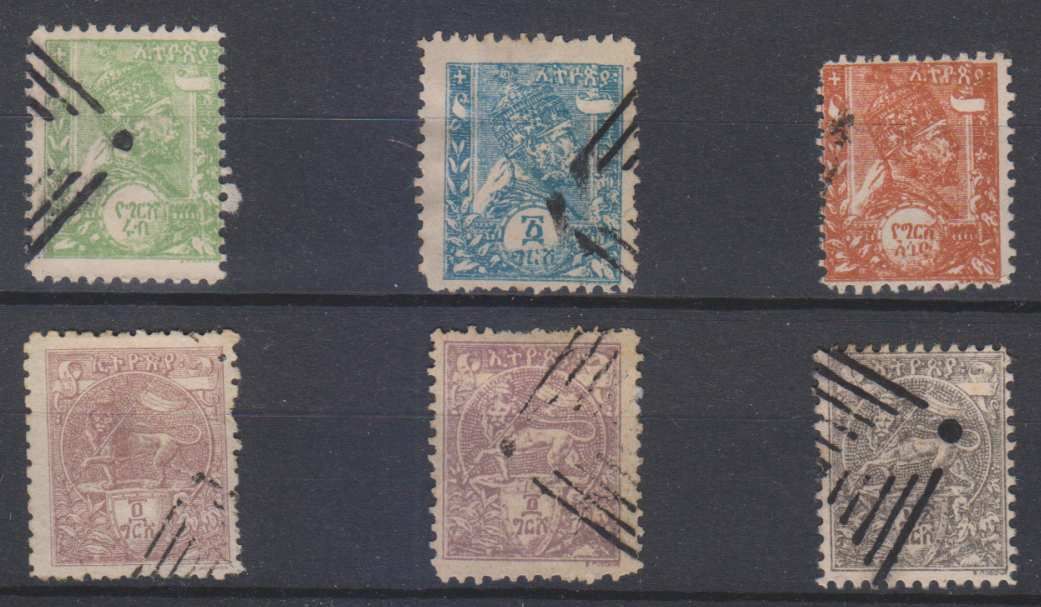
Forgeries with a square cancel, I've seen all four values. The
design is quite poorly done.
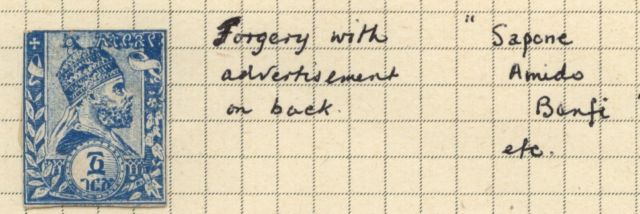
Forgery with advertisement text at the back.

Kamigata forgeries, reduced sizes,
with 'IMITATION' around 4 concentric circles cancel. The lion
design does not seem to have been forged by this forger. I've
also seen the blue stamp of this forgery type (http://doig.net/1895Issue.html).
The neck is not curved as in the genuine stamps.
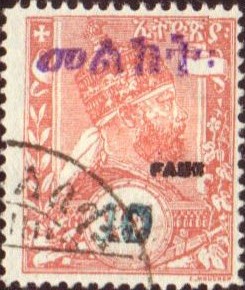

The white inner frame line (here just below the 'X' of 'FAUX')
does not continue all the way down in the Fournier forgery of the
Menelik issue.

Forged cancels as used by Fournier (reduced sizes)
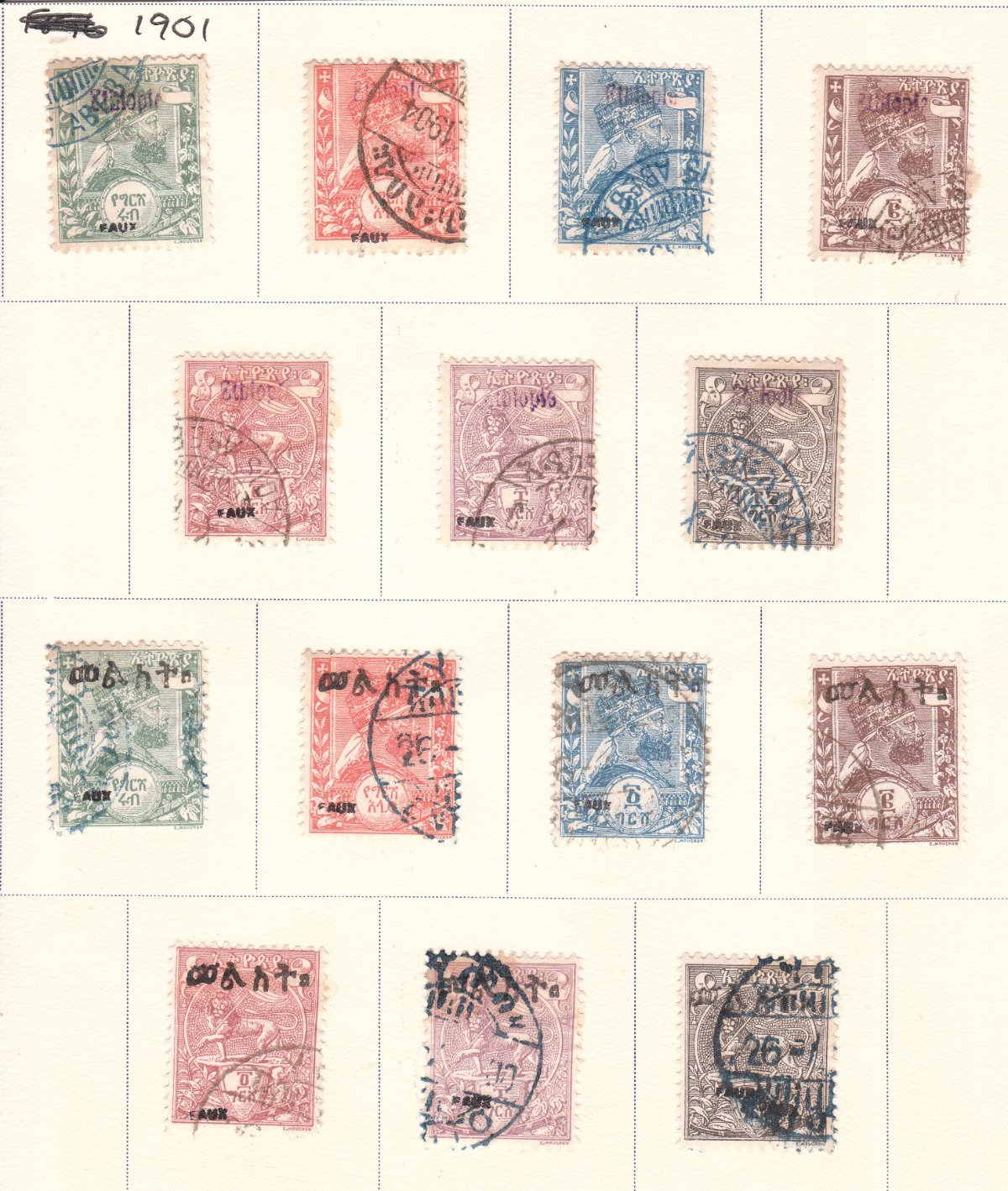
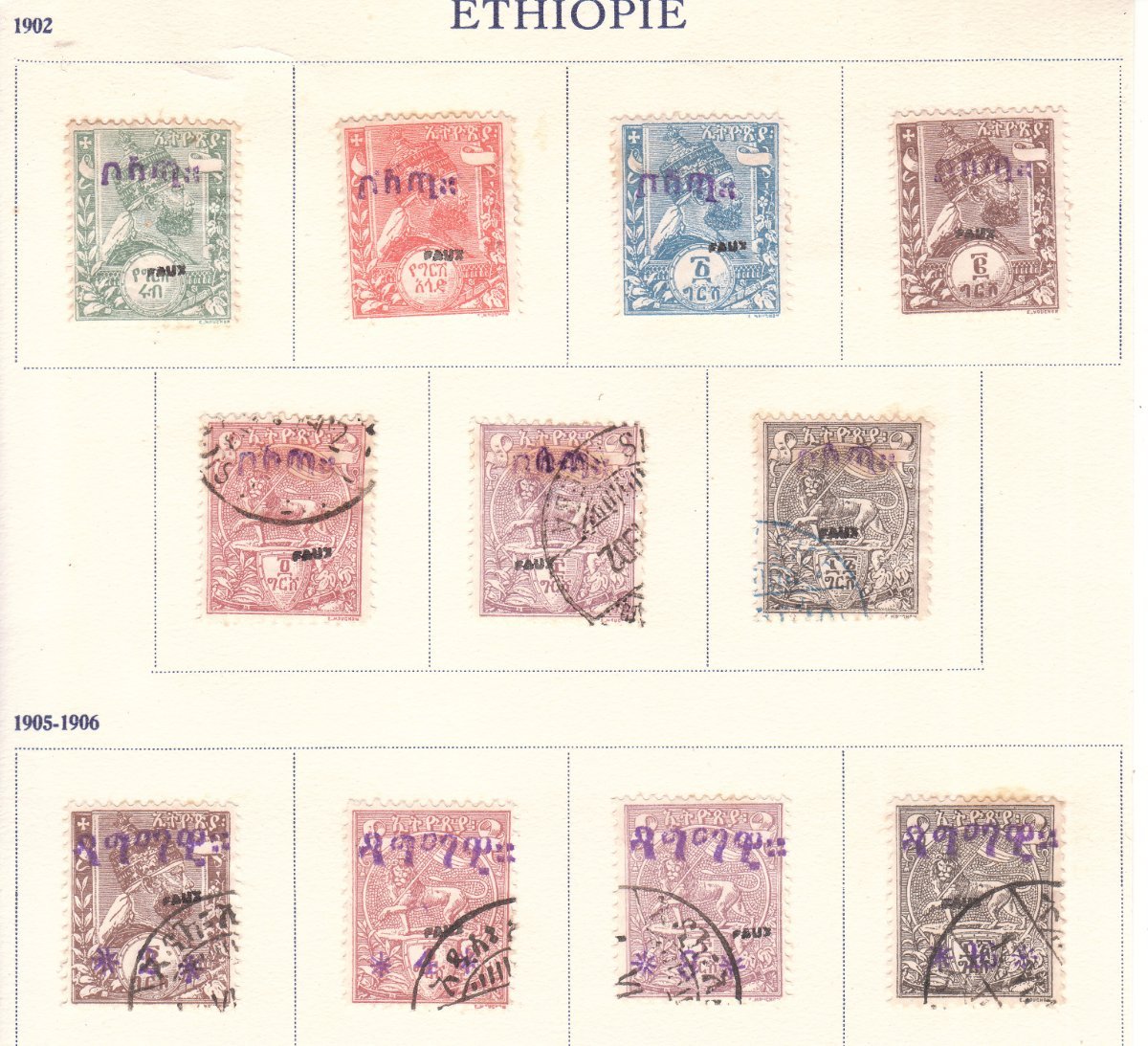
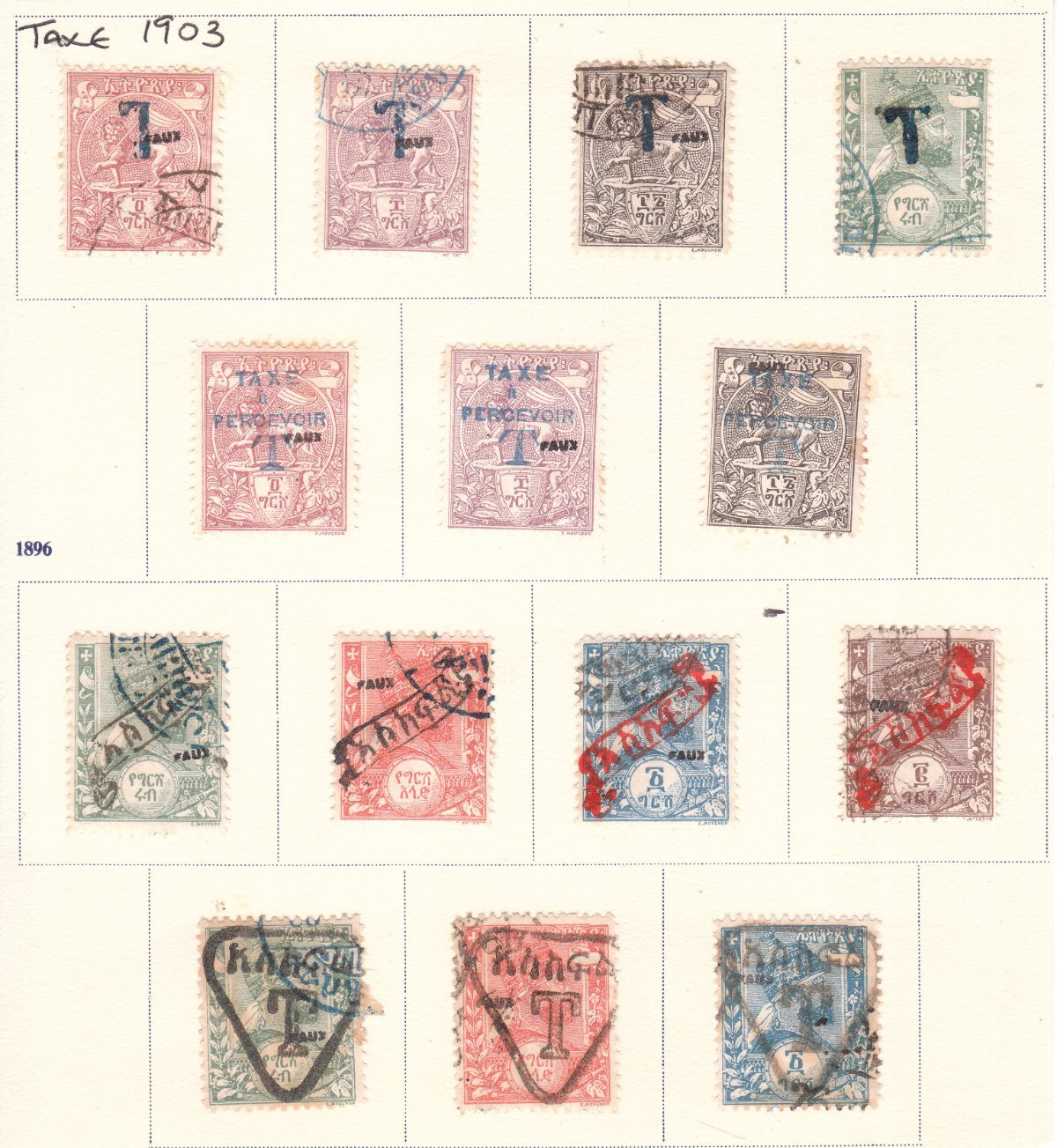 Fournier forgeries as found in the Fournier album.
Fournier forgeries as found in the Fournier album.
The Dire Daoua overprint was also forged. See http://doig.net/1911DDProv.html for more information. The relative position of the first 'E' of 'EXCEP' and the 'E' of 'FAUTE' is different from the genuine. The bottom part of the 'P' of 'EXCEP' should point to the left of the 'B' of 'TIMB', in the forged overprint it points to the center of the 'B'.
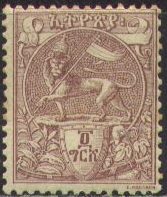
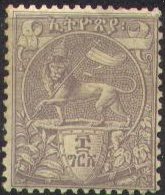
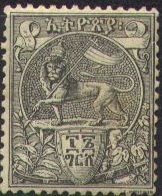
4 g brown 8 g lilac 16 g black
The stamps dealer Arthur Maury offered these stamps at a
discount in France. To be able to distinguish stamps for real use
in Ethiopia and stamps issued for stamp collectors these stamps
were overprinted with 'Ethiopie' (2 types) or native text (3
types).
Surcharged with or without overprint in native text (1904)
80 on 4 g brown 1.60 on 8 g lilac 3.20 on 16 g black Surcharged and overprinted with native text and stars(1907) 4 on 4 g brown 8 on 8 g lilac 16 on 16 g black 1908 Surcharged with 'piastres' 4 Pi on 4 g brown 8 Pi on 8 g lilac 16 Pi on 16 g black 1911 Overprinted 'AFF. EXCEP FAUTE TIMB', value with pen (Dire Daoua Provisional)
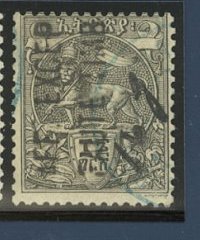
(Genuine)
4 g on 4 g brown 8 g on 8 g lilac 16 g on 16 g black

(Surcharged stamp)
These stamps are forged by Fournier, examples:
Forgeries: Fournier made forgeries of these stamps as well as the previous Menilek issue. Many different overprints can be found in 'The Fournier Album of Philatelic Forgeries'. The genuine stamps should be perforated 14 x 13 1/2, however, the Fournier forgeries are perforated 14 x 14. Again, there is an error in the design, the upper right scroll has 3 lines inside the loop (instead of 4) and no lines in front of the loop (instead of 3), source http://www.doig.net/Fournier.html. Also, the Fournier forgeries in the lion design have a shading on the right back leg, which is different from the genuine stamps. Fournier also forged cancels for this issue:

Forged cancels as used by Fournier (reduced sizes)
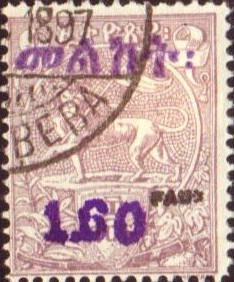
Fournier forgery with various overprints.
Other forgeries exist.
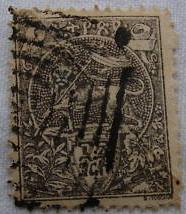
Forgery with a square of lines cancel, made by the same forger
who made the corresponding Melinek forgeries shown above.
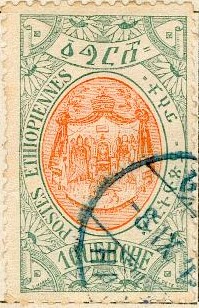
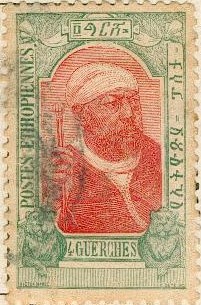
1/4 g green 1/2 g red 1 g green and red 2 g blue 4 g green and red (design as 2 g) 8 g brown and green 16 g brown and lilac (design as 8 g)
Many overprints exist on these stamps.
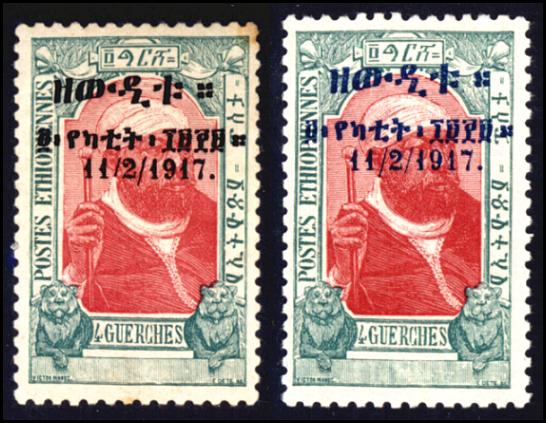
'11/2/1917.' and Ethiopean text on 4 g (left: overprint in black
and right: overprint in blue)
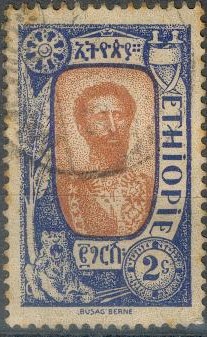

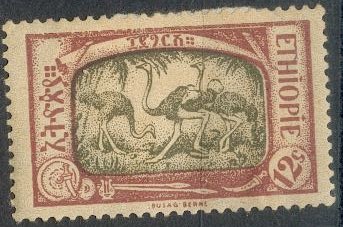
1/8 g violet and brown 1/4 g green and grey 1/2 g red and olive 1 g lilac and grey 2 g bleu and brown 4 g green and orange 6 g blue and orange 8 g olive and brown 12 g lilac and grey 1 $ red and grey 2 $ black and brown 3 $ green and orange 4 $ brown and lilac 5 $ red and grey 10 $ green and yellow Surcharged (1925-1929)
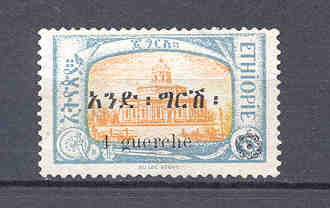
(Reduced size)
1/4 g on 1 $ 1/2 g on 5 $ 1/2 g on 8 g 1 g on 6 g (three types of overprint) 1 g on 12 g 1 g on 3 $ 1 g on 10 $
The forger Bela Szekula obtained the plates of these stamps with the help of a certain Jean Adolph Michel and made reprint-forgeries of the 1919 issue, offered as guaranteed genuine in used and unused condition. He also made 'errors', such as inverted or missing center pieces. See: http://www.doig.net/Sekula.html and http://www.doig.net/1919reprints.htm for more details. These reprints appeared around 1931. They can be recognized by the gum, which is cracked, while the original gum is smooth.
These reprints can also be found on post cards with the inscription "CARTE POSTALE Reproduction interdite – Collection Michel – Addis-Ababa" with forged cancels (the ones I've seen on the above mentioned site were all cancelled in the 1930's). Genuinely cancelled stamps are mostly used in the period 1919 to 1928. These postcards were never used in Ethiopia.
1/8 m orange and blue 1/4 m blue and red 1/2 m green and black 1 m red and black 2 m blue and black 4 m orange and brown 8 m lilac and brown 1 T brown and violet 2 T green and brown 3 T brown and green Overprinted with Ethiopian text in four straight lines (inauguration of new post office)
1/8 m orange and blue (black or red overprint) 1/4 m blue and red (violet overprint) 1/2 m green and black (violet or red overprint) 1 m red and black (black or violet overprint) 2 m blue and black (red overprint) 4 m orange and brown (violet or red overprint) 8 m lilac and brown (violet or red overprint) 1 T brown and violet (black or red overprint) 2 T green and brown (violet or red overprint) 3 T brown and green (red overprint) Coronation overprint with crown and 'NEGOUS TEREFI' 1/8 m orange and blue (violet overprint) 1/2 m green and black (red overprint) 2 m blue and black (red overprint) 8 m lilac and brown (blue overprint) 2 T green and brown (violet overprint) Airmail stamps with red or violet overprint (only valid on 16 August 1929) 1/8 m orange and blue 1/4 m blue and red 1/2 m green and black 1 m red and black 2 m blue and black 4 m orange and brown 8 m lilac and brown 1 T brown and violet 2 T green and brown 3 T brown and green Coronation of Haile Selassie, red, green or brown overprint with Ethiopian text and 'HAYLE SELASSIE 3 Avril 1930' 1/8 m orange and blue 1/4 m blue and red 1/2 m green and black 1 m red and black 2 m blue and black 4 m orange and brown 8 m lilac and brown 1 T brown and violet 2 T green and brown 3 T brown and green Overprinted with Ethiopian text in an ellipse
1/8 m orange and blue 1/4 m blue and red 1/2 m green and black 1 m red and black 2 m blue and black 4 m orange and brown 8 m lilac and brown 1 T brown and violet 2 T green and brown 3 T brown and green Surcharged 1/8 m (green) on 1 m red and black 1/8 m (red) on 2 m blue and black 1/8 m (green) on 4 m orange and brown 1/4 m (blue) on 1 m red and black 1/4 m (red) on 2 m blue and black 1/4 m (green) on 4 m orange and brown 1/2 m (blue) on 1 m red and black 1/2 m (red) on 2 m blue and black 1/2 m (green) on 4 m orange and brown 1/2 m (red) on 3 T brown and green 1 m (red) on 2 m blue and black 1 m (blue on top of red) on 2 m blue and black
1 g orange 2 g blue 4 g lilac 8 g green 1 T brown 3 T green 5 T red-brown
1 g red 2 g blue 4 g violet 8 g green 1 T brown 2 T red 3 T green
1/8 g red (Emperor) 1/4 g brown (railway bridge) 1/2 g lilac (Emperor) 1 g orange (Emperess) 2 g blue (Hayle Selassie) 4 g violet (Menelik II statue) 8 g green (Hayle Selassie) 1 T brown (Emperor) 3 T green (Emperess, different design) 5 T red-brown (Hayle Selassie, different design) Surcharged (1936) 1 c (blue) on 1/8 g red 2 c (red) on 1/4 g brown 3 c (blue) on 1/2 g lilac 5 c (blue) on 1 g orange 10 g (red) on 2 g blue Changed colors and red cross overprint (Red Cross issue) 1 g (+ 1 g) green 2 g (+ 2 g) red 4 g (+ 4 g) blue 8 g (+ 8 g) brown 1 T (+ 1 T) violet
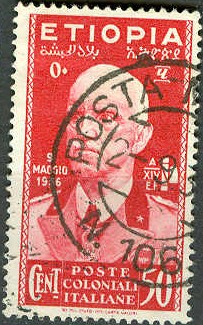
25 c green 30 c brown 50 c red Different design 10 c brown 20 c violet 75 c orange 1.25 L blue
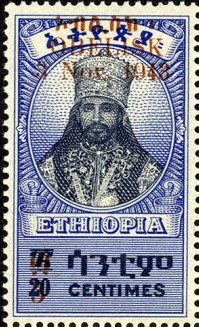
Overprint 'OBELISK 3 Nov. 1943'
Example:

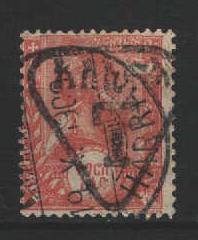
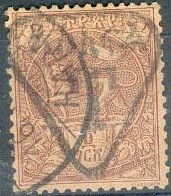
1/4 g green 1/2 g red 1 g blue 2 g brown 4 g brown 8 g lilac 16 g black
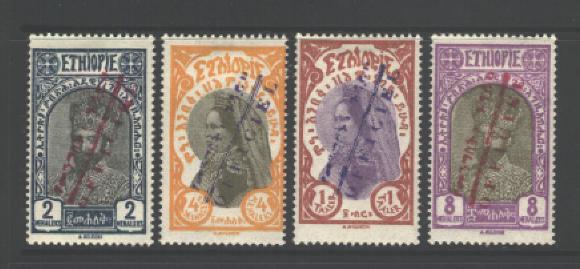
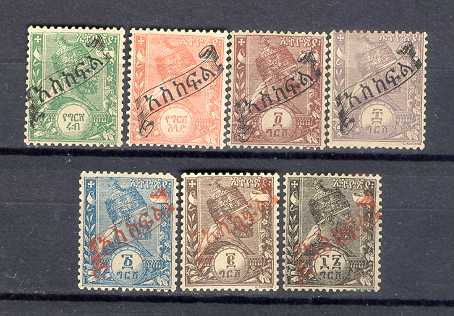
(Reduced sizes)
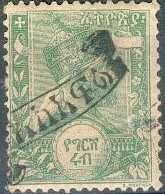
1/4 g green 1/2 g red 1 g blue (red surcharge) 2 g brown (red surcharge) 4 g brown 8 g violet 16 g black (red surcharge)
Stamps overprinted with 'T' or 'TAXE A PERCEVOIR' also exist:
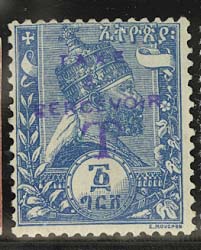
'TAXE A PERCEVOIR T' overprint
Lion with crown holding cross:
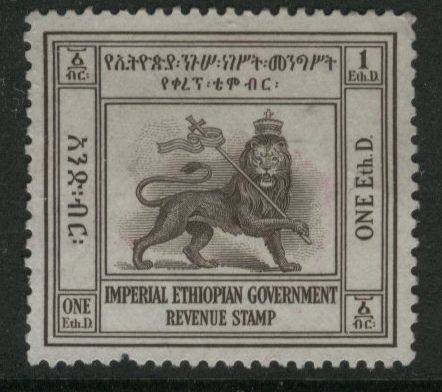
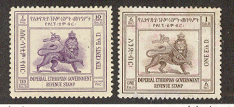
(Reduced sizes)
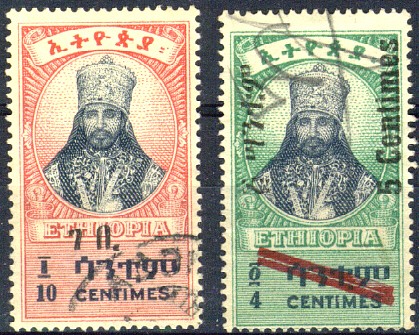
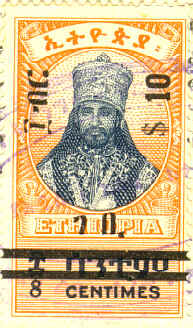
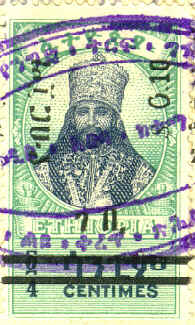
Ethiopia Booklet No. VI 'Ethiopian Fiscals and Fournier Forgeries' by Eric Reyne Cockrill Series Booklet No. 18 (I haven't read this book myself).
Doig's Ethiopia Stamp Catalogue: http://www.doig.net/EthiHome.html